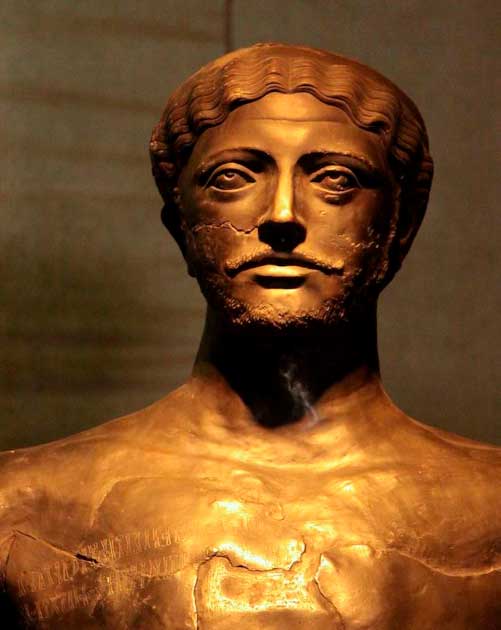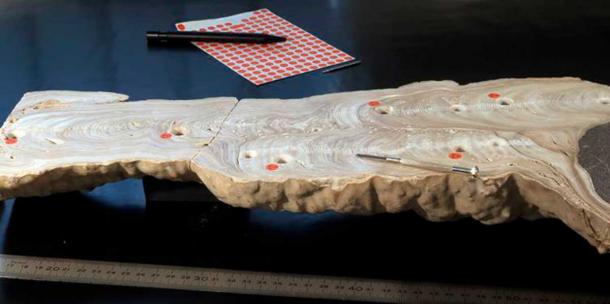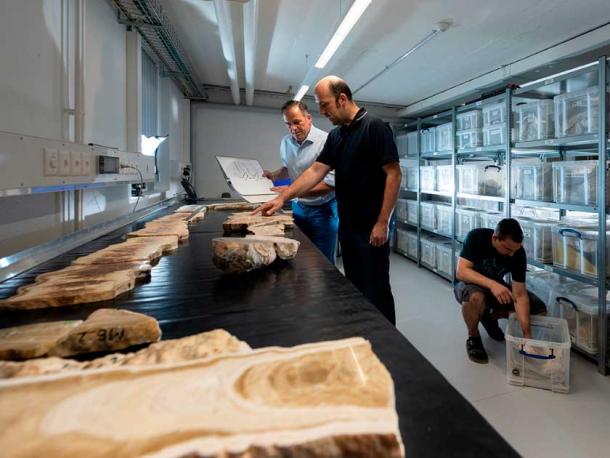
Power Vacuum Caused by Extreme Drought Led to the Spread of Islam
A power vacuum caused by an extreme drought 1,500 years ago in the Arabian Peninsula led to political unrest, war, and societal change. These were the preconditions that led to the development and spread of Islam, a newly emerging religion in the early 7th century AD, from a location near Mecca. More specifically, these extremely dry conditions contributed to the decline of the ancient South Arabian kingdom of Himyar, located in the southern highlands of Yemen. This previously unexplored phenomena of climate’s role in the spread of Islam have been published for the first time in the journal Science.
The Rise and Collapse of the Himyarite Kingdom: Drought and Wars
Researchers from the University of Basel explored the remaining traces of the Himyarite Kingdom, still found on the plateaus of Yemen. The Himyarite economy was centered around agriculture, propped up by a very sophisticated irrigation system that transformed this semi-arid and deserted area into fertile fields. This allowed the kingdom to thrive for almost 300 years, also acting as an intermediary link between East Africa and the Mediterranean world. Remains of terraced fields and ruins of earth dams and canals can still be found here.

A bronze statue of Dhamar Ali Yahbur II, a Himyarite king who probably reigned in late 3rd or early 4th century AD. Displayed in the Sana'a National Museum, Yemen. (Retlaw Snellac/CC BY 2.0)
A severe drought hit the region through the early 6th century, between 500 and 530, at persistent and regular intervals. Just 40 years later, in 570, the Himyarite kingdom would collapse under pressure from the neighboring kingdom of Aksum (modern-day Ethiopia). This suggests a clear correlation between the events – increased aridity and declining agricultural yields – according to the authors of the new study.
- A History of Islam: The Second Largest Religion in Today’s World Began With a Divine Revelation
- The Meaning of Mecca, Islam’s Holiest City
Its northern neighbors, the Byzantine and the Sassanid empires, were also at war with each other during this period, with Himyar getting sandwiched in the middle, causing it to further weaken, reports Forbes. In this turmoil, a religious faith promising eternal salvation and equality would emerge, namely Islam. “People were searching for new hope, something that could bring people together again as a society… The new religion offered this,” the researchers write in their study.
Isotopic Composition and Precipitation: A Direct Correlation?
This new study used a geological technique called dripstone using layered cave-deposits to help reconstruct the climate of the period. The researchers analyzed the shape and isotopic composition of a stalagmite dripstone from the Al Hoota Cave in present-day Oman. How this works is that the growth rate and chemical composition of the layers are directly correlated with the precipitation falling above the cave. This, in turn, affects the shape and isotopic composition of the deposited layers, serving as a historical record of climate, reports The Daily Mail.

Cross-section of a stalagmite from Hoti Cave in present-day Oman. Holes are from sampling for uranium dating, scratch marks from sampling for isotope analysis. (Timon Kipfer/University of Basel)
“Even with the naked eye you can see from the stalagmite that there must have been a very dry period lasting several decades. When less water drips onto the stalagmite, less of it runs down the sides. The stone grows with a smaller diameter than in years with a higher drip rate,” said Professor Dominik Fleitmann, of the University of Basel, who is the lead author of the study.
Fleitmann explains that the data unto itself was insufficient in explaining a direct correlation between the drought and the fall of the Himyarite kingdom. The study then shifted its focus towards climate reconstruction from the region, meticulously going through years and years of data and historical resources. For this purpose, they collaborated with historians to narrow down the window of the drought. These sources included data about the water level of the Dead Sea and historical documents that described a drought of several years, dated to 520 – a green tick for the study.

Together with his research team, Dominik Fleitmann (left) analyzes stalagmites from various dripstone caves to reconstruct the climate of the past. (Christian Flierl/University of Basel)
Water, Labor, and the Maintenance of Systems
“Water is absolutely the most important resource. It is clear that a decrease in rainfall and especially several years of extreme drought could destabilize a vulnerable semi-desert kingdom,” added Fleitmann. Fleitmann has also pointed out that it is only recent historiography that is looking at the role of climate in the change and weakening of regimes, particularly climate change over such an extended period. Islam was not met with resistance because it came to a population struggling with hardship and distress.
- The First Caliphs of Islam: Power, Corruption, War, and Treachery in the Rashidun Caliphate
- Where Is the True Location of Mecca?
The final nail in the coffin was labor – all civilizations have been founded on the work done by manual labor which is severely underpaid (if at all) and exploited. Himyar’s irrigation systems required constant maintenance and repairs, requiring tens of thousands of workers who were organized. A population stricken by such distress and water scarcity could not respond to this, causing the kingdom to collapse from within.
Fleitmann was quick to add that this study does not in any way suggest that drought was the prime mover of 6th and 7th century Islam. "However, it was an important factor in the context of the upheavals in the Arabian world of the sixth century,” he concludes.
Top image: A new study reveals the role droughts played in the development and spread of Islam. Source: Leo Lintang / Adobe Stock
By Sahir Pandey
References
Bressan, D. 2022. Dripstone Records Drought That Might Have Paved The Way For Islam. Available at: https://www.forbes.com/sites/davidbressan/2022/06/17/dripstone-records-drought-that-might-have-paved-the-way-for-islam/?sh=50a3eb764a6d
Fleitmann, D., Haldon, J. 2022. Droughts and societal change: The environmental context for the emergence of Islam in late Antique Arabia. Science, 376 (6599). Available at: DOI: 10.1126/science.abg4044
Mail Online. 2022. Extreme DROUGHTS on the Arabian peninsula paved the way for the rise of Islam in the seventh century, study reveals. Available at: https://www.dailymail.co.uk/sciencetech/article-10924361/Extreme-droughts-Arabian-peninsula-paved-way-rise-Islam.html
University of Basel. 2022. Droughts in the sixth century paved the way for Islam. Available at: https://www.unibas.ch/en/News-Events/News/Uni-Research/Droughts-in-the-sixth-century-paved-the-way-for-Islam.html
















Comments
Really ?! Maybe it's the other way around. Seriously, we really don't know why the Amazon was a desert, and the Sahara green 10,000 yrs ago. But it sure wasn't global warming from petroleum use. These scientists need to go back to the drawing board, and quit guessing. Funny what people will say to keep the funding coming in.